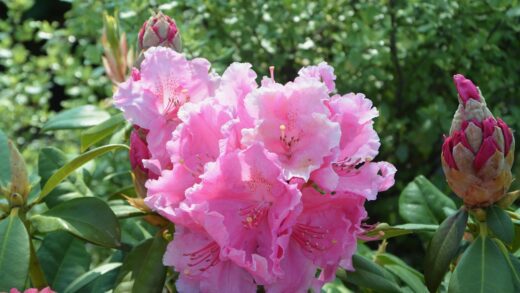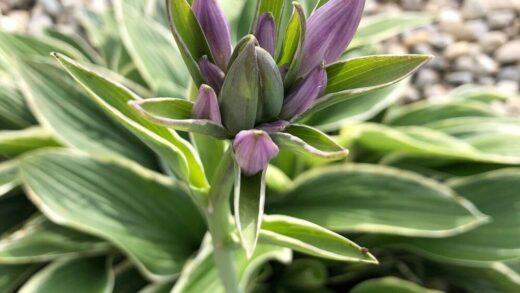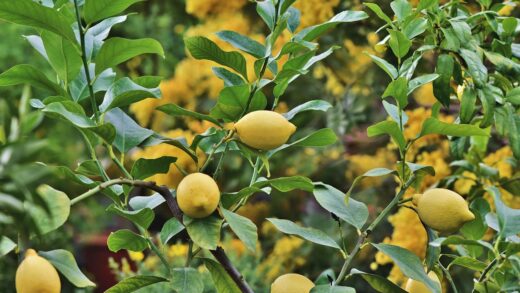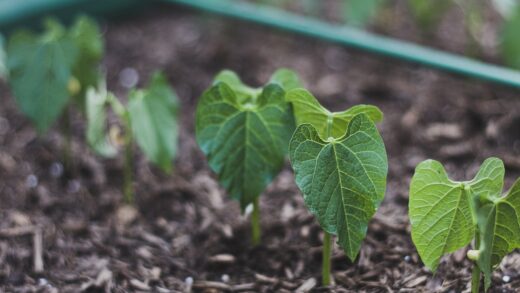For many gardeners in regions with cold winters, the vibrant beauty of the cape daisy is often thought of as a fleeting, single-season pleasure. However, because Osteospermum is technically a tender perennial, it is entirely possible to keep these plants alive through the winter and enjoy their spectacular blooms for another year. The process of overwintering requires a proactive approach and a proper understanding of the plant’s needs during its dormant period. Successfully guiding your cape daisies through the winter not only saves you the cost of purchasing new plants each spring but also allows you to cultivate larger, more mature specimens over time. This professional guide will detail the essential steps and conditions required to successfully overwinter your prized cape daisies.
The primary reason cape daisies require protection in many climates is their lack of cold hardiness. Native to the temperate regions of South Africa, these plants are not adapted to survive prolonged periods of freezing temperatures. While a mature, well-established plant in the ground might tolerate a very light, brief frost, a hard freeze where temperatures drop significantly below 0 degrees Celsius for several hours will typically kill the plant. The water within the plant’s cells freezes and expands, rupturing the cell walls and causing irreparable damage to the foliage, stems, and root system. Therefore, in any climate where such conditions are expected, intervention is necessary for survival.
The decision of when to begin the overwintering process is crucial. You should not wait until the first frost has already occurred, as this can damage the plant and reduce its chances of surviving the winter indoors. The ideal time to take action is in the autumn, just as nighttime temperatures begin to consistently drop towards the 5-7 degree Celsius range. Monitoring your local weather forecast will allow you to act proactively before any real danger of frost is imminent. This timing ensures the plant is brought into a protected environment while it is still healthy and vigorous.
There are two primary methods for overwintering cape daisies: bringing the entire potted plant indoors or taking cuttings in late summer to grow into new plants over the winter. Bringing an entire plant inside is a great option if you have a mature, well-shaped specimen that you wish to preserve. This method requires having a suitable indoor location with adequate light and cool temperatures. Taking cuttings, on the other hand, is a space-saving alternative that allows you to propagate numerous new plants from a single parent, ensuring you have a fresh and vigorous stock ready for the following spring.
Regardless of the method you choose, it is essential to thoroughly inspect the plants for any pests or diseases before bringing them indoors. Pests like aphids, spider mites, and whiteflies can thrive and multiply rapidly in the warm, stable conditions of a home environment, potentially infesting your other houseplants. Carefully check the stems and the undersides of the leaves. If you find any pests, it is best to treat the plant with insecticidal soap or neem oil while it is still outdoors to avoid bringing an infestation inside.
More articles on this topic
Preparing plants for dormancy
Before you move your cape daisy plants indoors for the winter, some preparation is necessary to help them transition smoothly into their dormant period. A few weeks before the planned move, it is beneficial to give the plant a significant pruning. Cut back the entire plant by about one-third to one-half of its size. This hard pruning reduces the overall mass of foliage that the root system needs to support during the winter, which can be beneficial when the plant’s metabolic processes are slowed down. It also helps to create a more compact, manageable shape for an indoor setting and removes any leggy, overgrown stems.
If your cape daisy is planted in a garden bed, you will need to carefully dig it up and pot it into a suitable container. Choose a pot that is just large enough to comfortably accommodate the root ball, as a pot that is too large can hold excess soil and moisture, increasing the risk of root rot. Use a high-quality, well-draining potting mix. After potting the plant, water it thoroughly to help settle the soil around the roots. It is best to perform this task at least a week or two before bringing the plant inside to allow it to recover from the stress of being transplanted.
For plants that are already in containers, you should still prepare them for their indoor stay. This is a good time to clean up the plant by removing any yellowing or dead leaves and any remaining spent flowers. You should also check the top of the soil and remove any weeds or debris. Wiping down the outside of the pot can also help prevent bringing in unwanted pests or dirt. This general cleanup ensures the plant is in the best possible condition before it enters its winter home.
The final step in preparation is the transition itself. Do not move the plant directly from its outdoor location into a warm, dry house, as the sudden change in environment can cause shock, leading to leaf drop. Instead, acclimate the plant gradually over a period of several days. You can start by moving it to a more sheltered location outdoors, such as a covered porch or against a protective wall. Then, you might bring it into an unheated garage or enclosed porch for a few days before finally moving it to its final winter location indoors. This gradual transition helps the plant adjust to the changes in light, temperature, and humidity.
More articles on this topic
The ideal indoor environment
The key to successfully overwintering a dormant cape daisy is to provide an environment that is cool and bright. The goal is not to encourage active growth but rather to keep the plant alive in a state of suspended animation until spring. An ideal location would be a place that maintains a cool temperature range, typically between 5 and 10 degrees Celsius. Suitable locations often include a frost-free garage, an unheated basement with a window, a minimally heated sunroom, or an enclosed porch. A warm room in the main part of the house is generally not suitable, as it will encourage weak, spindly growth.
Light is the other critical component of the indoor winter environment. While the plant is dormant and not actively photosynthesizing at a high rate, it still requires bright, indirect light to survive. A spot near a window is essential. An east-facing or north-facing window can be ideal, as it provides sufficient brightness without the intensity of direct southern or western sun, which could heat the plant too much and stimulate premature growth. If a natural light source is not available, you can supplement with a simple fluorescent shop light or a grow light suspended a foot or two above the plant, running for about 10-12 hours a day.
Humidity is generally not a major concern during the dormant period, but you should avoid placing the plant near any heat sources like radiators or vents, as this can dry out the plant and the surrounding air excessively. The primary focus during this time is on temperature and light. The cool temperatures are what signal the plant to remain dormant, conserving its energy reserves for the spring. If the environment is too warm, the plant will be tricked into thinking the growing season has begun and will produce weak, pale growth that will not be viable once moved back outdoors.
Throughout the winter, you should periodically check on your plant. Inspect it for any signs of pests that may have survived the initial treatment or for any signs of disease, such as mold developing on the soil surface. Remove any leaves that die and fall off to maintain good hygiene. The plant will likely look quite sparse and may even lose many of its leaves during this period, which is a normal part of dormancy. As long as the main stems remain firm and show some green, the plant is still alive and resting.
Watering and care during winter
Watering is the aspect of winter care that requires the most significant adjustment from the plant’s growing season routine. During dormancy, the plant’s metabolic processes slow down dramatically, and its need for water is drastically reduced. The most common mistake made when overwintering plants is providing too much water, which inevitably leads to root rot in the cool, low-light conditions. The soil should be allowed to dry out almost completely between waterings.
A good rule of thumb is to check the soil moisture every two to three weeks. Insert your finger deep into the pot; if you feel any moisture at all, do not water. Only when the soil feels dry several inches down should you provide a small amount of water. You should give it just enough to lightly moisten the soil, not enough to thoroughly soak it or have it run out the bottom of the pot. For the entire winter period, you may only need to water the plant a handful of times. Under-watering is far less of a risk during dormancy than overwatering.
During the overwintering period, you must completely cease all fertilization. The plant is not actively growing, so it cannot utilize any added nutrients. Fertilizing a dormant plant is not only wasteful but also harmful. The unused fertilizer salts will accumulate in the soil, creating a toxic environment that can burn and damage the dormant root system. You should not resume any feeding until you see clear signs of new growth in the early spring.
Aside from watering, winter care is primarily about observation. Keep an eye on the plant’s overall condition. It is normal for it to look a bit sad and for most of its leaves to yellow and drop off. This is part of the dormancy process. What you need to watch for are signs of problems, such as shriveling stems (a sign of extreme dryness or root death) or soft, mushy stems (a sign of rot). If the conditions are right, the plant will require very little intervention from you until it is time to wake it up for the new season.


















